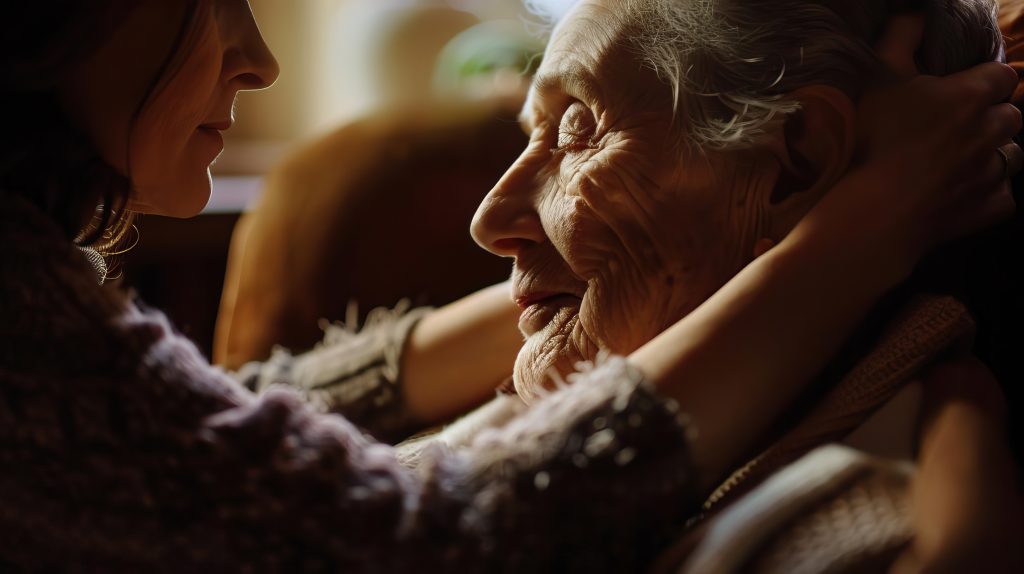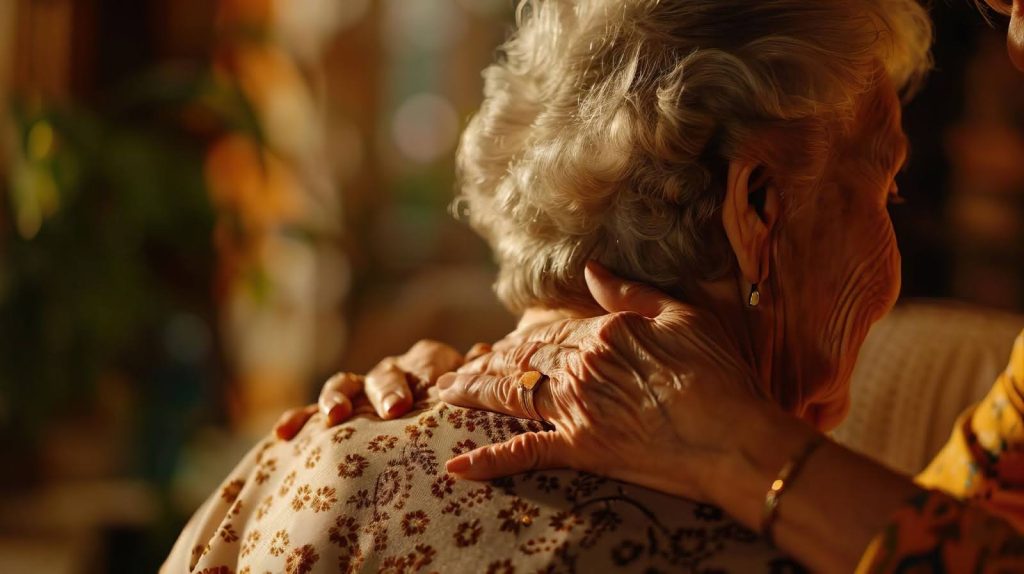The decisions you make when a loved one is transitioning can be overwhelming. A key decision is whether your loved one should get hospice care at home or at a facility. Wings of Hope Hospice understands the weight of your decision and will guide you with kindness, experience, and clarity.
Hospice treatment, whether at home or in a facility, emphasizes dignity, pain management, and emotional support. However, each setting has benefits, and the best choice relies on your family’s needs, your loved one’s condition, and the most serene and supportive environment.
What Is Hospice Care?

Hospice care is specialized assistance for people with terminal illnesses. Instead of focusing on healing sickness, it aims to improve the quality of life. Through a multidisciplinary team, hospice care offers physical, emotional, and spiritual support to the patient as well as their entire family.
At-Home Hospice Care: Comfort in Familiar Surroundings
Patients can stay in their homes, surrounded by familiar sights, sounds, and rituals, thanks to at-home hospice care. It’s frequently the go-to option for families that wish to keep things normal while being actively involved in their loved one’s care.
Benefits of At-Home Hospice:
- Familiar environment: Many patients feel more at ease surrounded by their belongings and loved ones.
- Personalized care: Services are tailored to the home environment and adjusted as needs change.
- Family involvement: Loved ones can play an active role in daily care and decision-making.
- Emotional peace: Being home can offer a more profound sense of emotional comfort and control.
Considerations:
- Family availability: Home care works best when family or caregivers can provide daily assistance, especially outside of nurse visits.
- Equipment and space: Some homes may need adjustments or medical equipment to ensure safety and comfort.
- 24/7 support: While hospice nurses are available on-call 24/7, in-person care may be limited to scheduled visits unless an emergency arises.
Our staff at Wings of Hope provides comprehensive in-home hospice services, including medication administration, symptom management, emotional support, spiritual care, and caregiver respite. On this journey, you’re never by yourself.
In-Facility Hospice Care: Around-the-Clock Support

A hospice facility might be a better option in some circumstances, especially if a patient has more complicated care needs or if family members are unable to continue to support them at home.
Benefits of In-Facility Hospice Care:
- Continuous professional care: Nurses and care staff are available 24/7 to manage symptoms and ensure comfort.
- Less burden on family: Loved ones can focus more on being present rather than handling day-to-day caregiving tasks.
- Specialized equipment: Facilities are equipped to handle complex needs that may be difficult to manage at home.
- Peaceful setting: Many hospice facilities are designed to be warm and home-like, with private rooms and space for family visits.
Considerations:
- Less privacy: While care is attentive, it’s a shared environment where patients may have less control over routine or surroundings.
- Emotional distance: Being away from home may feel unsettling for some patients, especially in their final days.
- Visitation limits: Depending on the facility and situation, visiting hours and flexibility can vary.
Through our partnerships with reputable hospices, Wings of Hope can assist you in investigating inpatient alternatives that uphold the same level of respect and compassion as our in-home care.
Common Myths About Hospice Care Settings
There are many misunderstandings about hospice, and we often hear the same concerns from families. Here’s the truth:
- Myth: Hospice is only for the very last days of life.
Truth: Hospice can begin earlier, when a doctor believes life expectancy is six months or less. - Myth: Choosing facility care means giving up.
Truth: In-facility hospice offers specialized support, not abandonment. It’s another form of loving care. - Myth: At-home hospice is too difficult for families.
Truth: With guidance and scheduled professional visits, many families find home care to be empowering and deeply meaningful.
Supporting the Caregivers, Too
Providing care, whether in a facility or at home, may be emotionally and physically taxing. Wings of Hope helps families deal with this burden by offering tools, counseling, and opportunities for respite care.
Support services we offer:
- 24/7 on-call nursing support
- Emotional counseling for family members
- Grief support during and after the loss
- Respite care to give primary caregivers time to rest
We believe supporting the family is just as important as caring for the patient. You deserve compassion, too.
Financial Considerations: What Does Hospice Care Cost?

Medicare, Medicaid, and other private insurance plans cover the costs of hospice services, whether they are rendered in a facility or at home.
Covered services may include:
- Visits from nurses, aides, and hospice team members
- Medications related to comfort and symptom relief
- Medical equipment such as hospital beds or oxygen
- Short-term inpatient care, if needed
Some facilities may incur out-of-pocket expenses associated with room and board fees, particularly in long-term settings. Our staff is pleased to assist you with your insurance company, review your coverage, and provide clear information so you can make informed choices.
A Quick Comparison: At-Home vs. In-Facility Hospice
| Feature | At-Home Hospice | In-Facility Hospice |
| Care environment | Familiar home | Medical setting designed for comfort |
| Medical support | On-call and scheduled visits | 24/7 staff onsite |
| Family involvement | Highly involved | Supportive presence without full-time care |
| Costs | Typically covered by Medicare | Covered, but may have room/board costs |
| Best for | Patients who prefer home and have caregiver support | Patients with complex needs or limited family support |
How to Choose What’s Best
There isn’t a single, universal solution. The choice that offers your loved one and your family the greatest amount of comfort and tranquility is the right one. To assist you in making a decision, consider the following questions:
- What does your loved one prefer? Have they expressed a desire to stay at home, or would they feel safer in a care facility?
- Can you provide care or have access to support at home?
- Does your loved one’s condition require constant medical supervision?
- What environment feels most peaceful for the final moments, home or a dedicated space with trained staff?
Wings of Hope is here to help, no matter what you decide. Our care staff will help you assess your loved one’s needs, discuss options, and support your family.
Compassionate Care, Wherever You Need It
Our goal at Wings of Hope Hospice is to serve and comfort patients and their families during the most difficult times in life. Whether you choose in-facility or at-home hospice care, our staff is dedicated to delivering the same level of compassion, expertise, and care.
We’re available to discuss if you’re not sure where to start. Get in touch with us for a free consultation, and let us guide you through this decision in a kind and pressure-free manner.
Call us today or visit www.wohhospice.com/contact to learn more.
Frequently Asked Questions About Hospice Care Settings
Q: Can my loved one start hospice care at home and later move to a facility if needed?
A: Yes. Hospice care is flexible. Many families begin care at home and transition to a facility if their loved one’s needs become more complex or caregiving becomes too overwhelming. Wings of Hope will help you navigate any transition with dignity and ease.
Q: How often do hospice nurses visit the home?
A: The frequency of visits depends on the patient’s condition and care plan. In most cases, nurses visit several times per week, with aides, social workers, chaplains, or volunteers visiting as needed. Emergency support is always available 24/7.
Q: Is hospice care only for cancer patients?
A: No. Hospice care is for anyone with a terminal illness and a prognosis of six months or less, regardless of diagnosis. This includes conditions like heart failure, COPD, Alzheimer’s, ALS, kidney disease, and more.
Q: Will my loved one still receive pain medication at home?
A: Absolutely. Pain and symptom management are central to hospice care, no matter the setting. At-home patients receive medications delivered to the home, and nurses provide guidance on administration and dosage.
Q: What happens if symptoms get worse at home and we can’t manage them?
A: If a patient experiences symptoms that are difficult to control at home, short-term inpatient care can be arranged to stabilize their condition. Wings of Hope can quickly coordinate care in a partnered facility and bring your loved one back home if and when they are comfortable.
Q: How is hospice care paid for?
A: Hospice care is typically covered by Medicare, Medicaid, and most private insurance plans. This includes medical care, medications related to the terminal illness, equipment, and support services. We’ll help you understand your coverage and any potential costs.
Q: Will I still be able to visit my loved one in a facility? A: Yes. Hospice facilities welcome family visits and aim to create a calm, family-friendly space. Some even offer overnight accommodations or private areas for extended visits. We’ll help you choose a facility that aligns with your family’s needs.
Q: How do I know when it’s time to call hospice?
A: If your loved one has a serious illness and is experiencing frequent hospitalizations, worsening symptoms, weight loss, or increasing fatigue, it may be time to explore hospice care. You don’t have to wait for a doctor’s referral—contact Wings of Hope directly, and we’ll help you assess next steps.
Q: How do I get started with Wings of Hope?
A: Simply call us or fill out our contact form at www.wohhospice.com. We’ll listen to your concerns, answer your questions, and offer a no-obligation consultation to help you determine the best path forward for your family.





